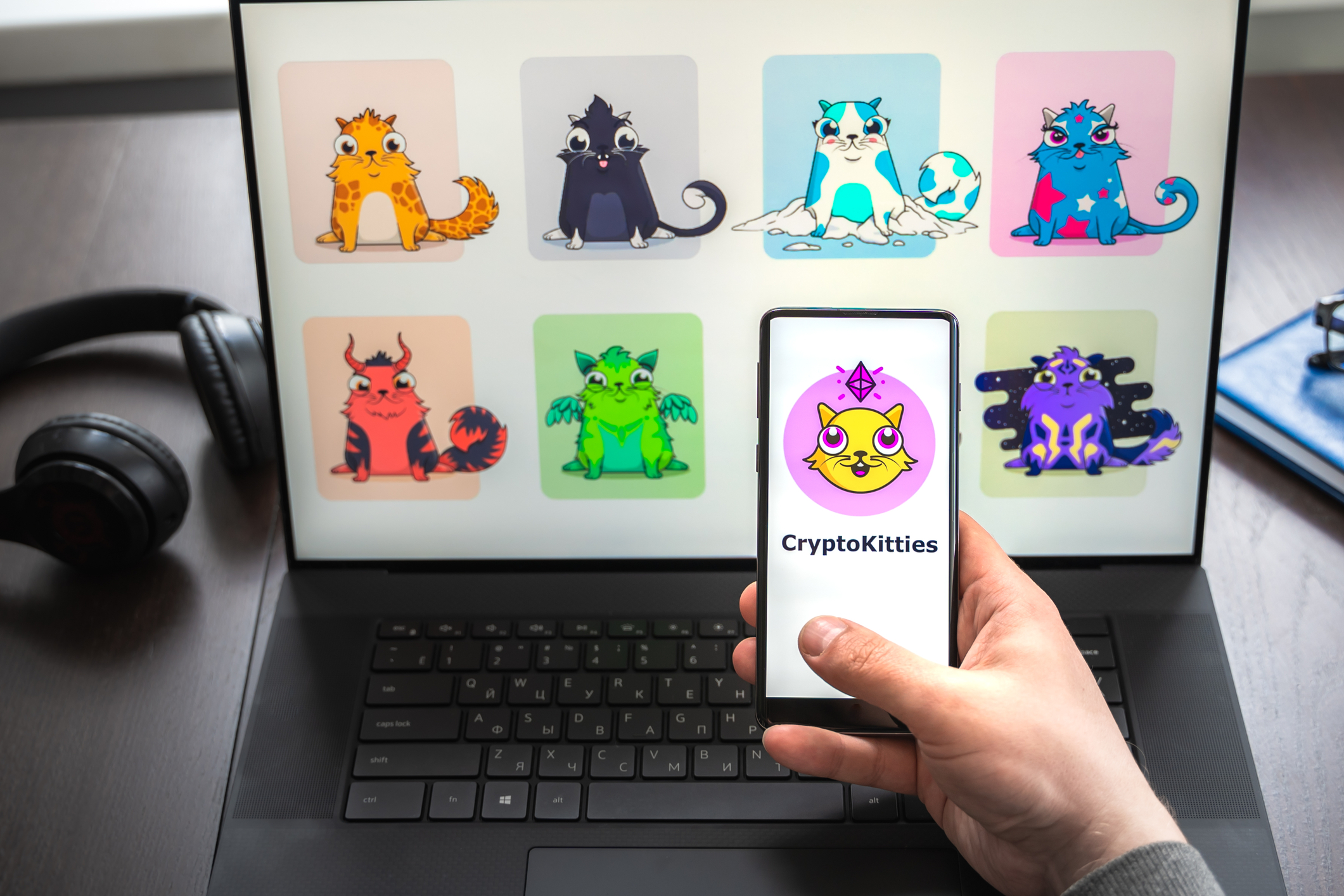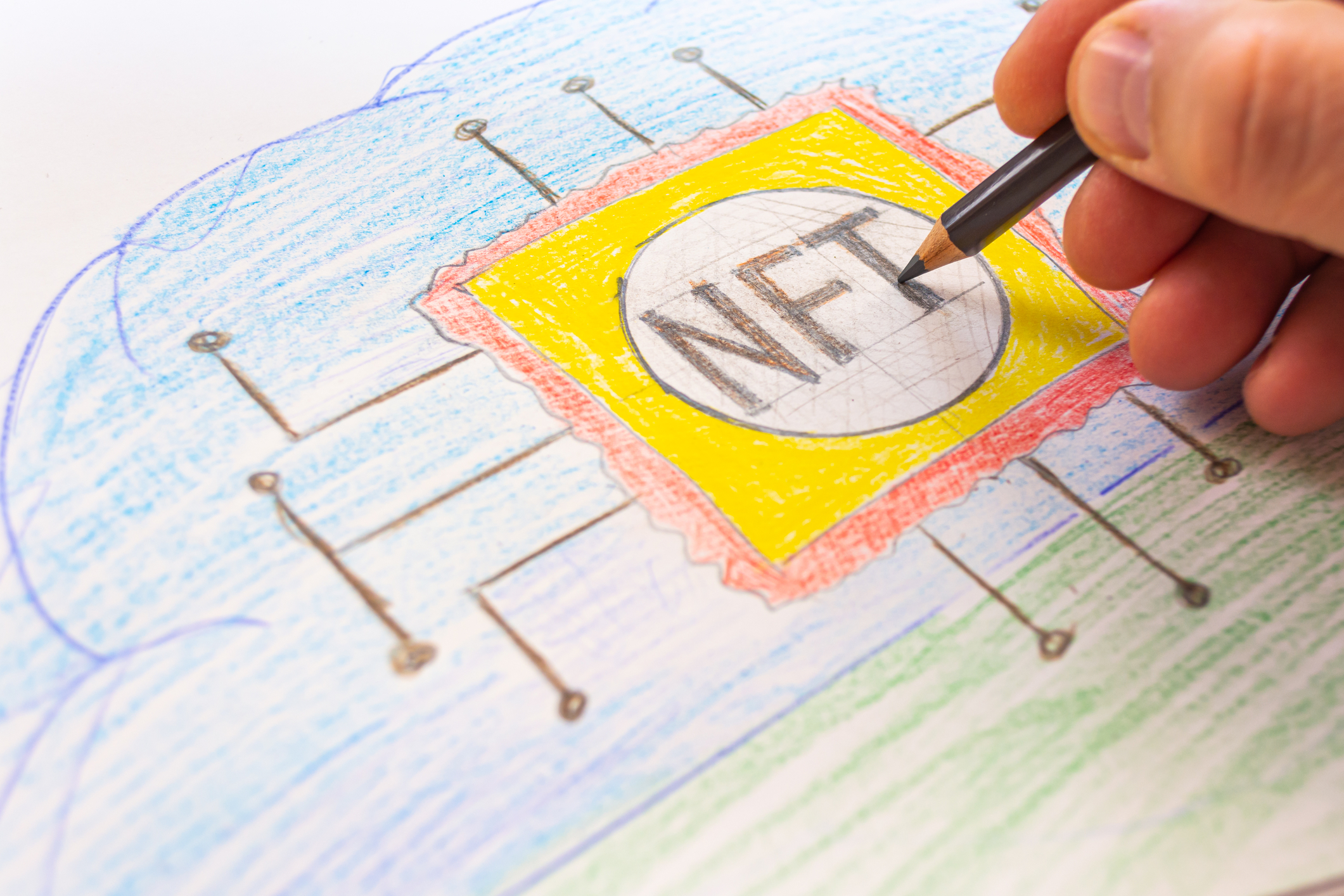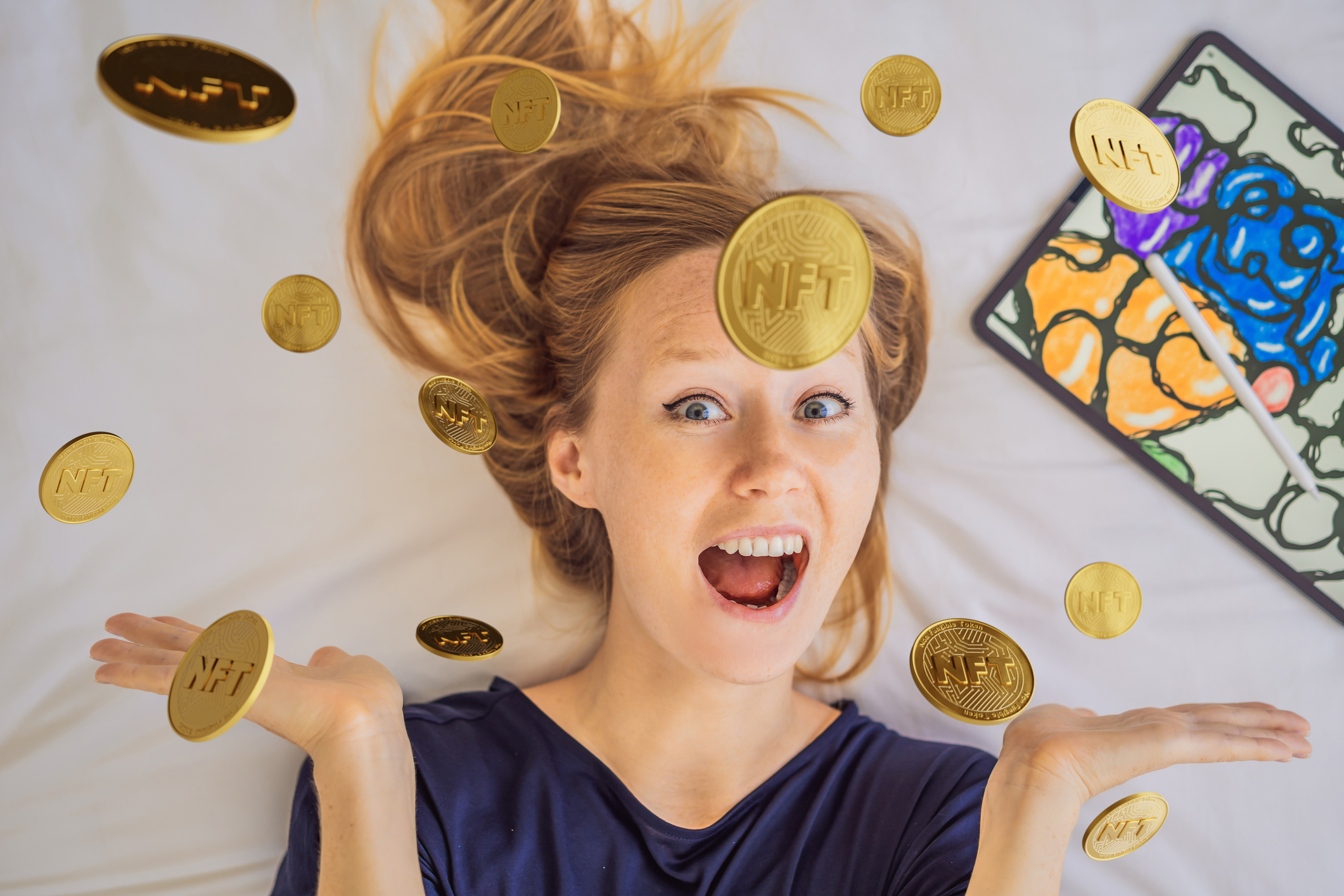Non-fungible tokens (NFTs) are digital objects that live on blockchains. They are typically associated with digital media, such as images or music. A US$ 1.59 billion NFT market has sprung up seemingly overnight, fueled by a recent spate of media attention.
In the last few weeks, I’ve seen a lot of questions about the implications of taking screenshots of non-fungible tokens (NFTs) art. So, I decided to write a quick FAQ to clear things up.
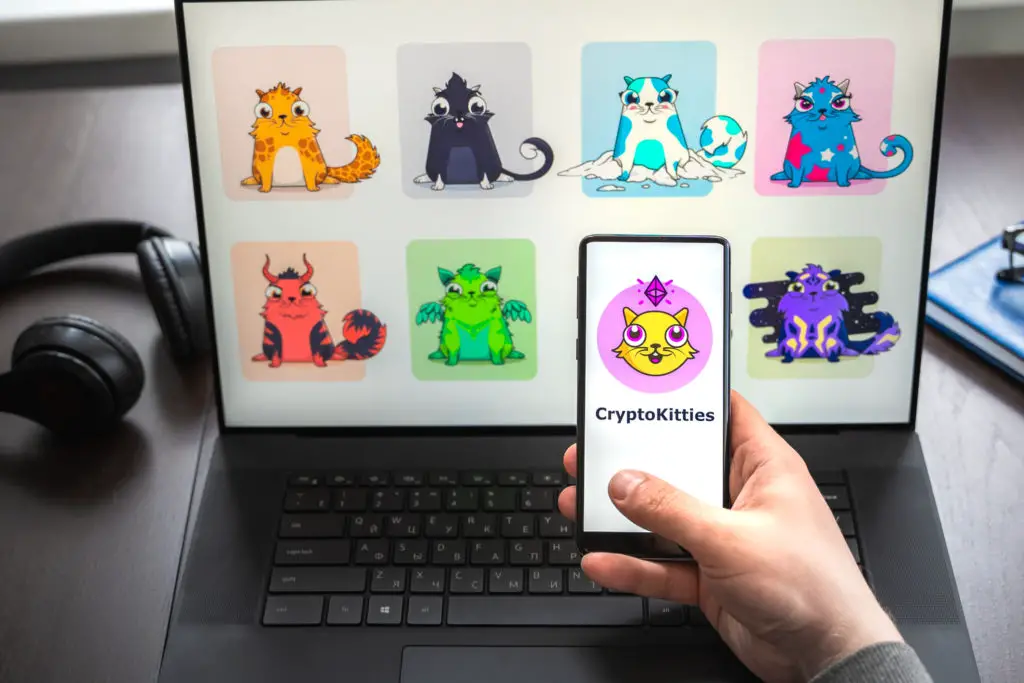
1. Why Can’t You Simply Take a Screenshot of an NFT?
NFTs are not the artworks themselves; they’re a record of the artwork ownership on a blockchain. When you take a screenshot of an NFT art piece, you only capture the visible image, not the underlying blockchain data. Because of blockchain’s immutability principle, NFT tokens can’t be screenshotted.
However, it is possible to screenshot the digital art linked to an NFT because the actual artwork itself is not stored on the blockchain. This is due to cost and size considerations – storing digital art on a blockchain would quickly become prohibitively expensive.
As a result, taking a screenshot of an NFT can provide you with a copy of the art, but it will not give you ownership of the piece itself because the NFT token part is not included in the screenshot.
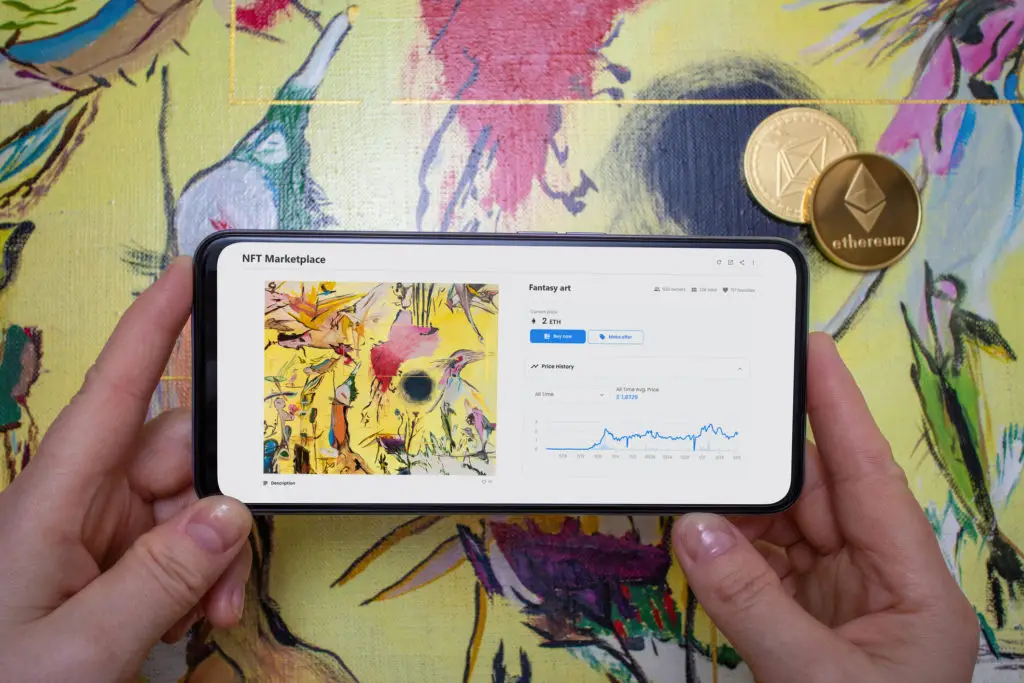
2. Why Doesn’t Taking a Screenshot of NFT Art Ruin Its Value?
Taking a screenshot of an NFT does not ruin its value, as the value is in the unique NFT stored on the blockchain and not in the actual digital artwork. A screenshot does not copy the underlying NFT data and therefore does not decrease the value of an NFT art piece.
Unlike other digital media, NFT-linked artworks have NFT tokens. The tokens carry “unique information,” denoting that every single token is different from the other. The tokens are created using a cryptographic hash function and stored on a blockchain. The token acts as proof of “ownership” and “authenticity,” and it is what gives the NFT-linked artwork value, as opposed to the artwork itself.
When someone buys an NFT art piece, they’re actually buying the token, not the image. And because each token is unique, the value of an NFT comes from its limited supply. Even if someone takes a screenshot of your NFT art, the screenshot isn’t a replica of the NFT piece – it is just a copy of the image, not the actual NFT itself.
Moreover, they cannot sell the screenshot or use it as their own because the NFT token of the art piece is still securely stored on the blockchain with your ownership information and can not be duplicated.
3. Is Saving an NFT Illegal?
Saving NFT art doesn’t change the underlying blockchain data, so it’s perfectly legal. The only time it may be illegal to save an NFT is if you sell it or claim it as your own.
But if you’re saving it for your enjoyment, then there’s no problem. You can think of taking a screenshot of an NFT art as taking a picture of a physical painting hanging in a museum – the picture doesn’t change the value or ownership of the image.
However, if you’re trying to profit from someone else’s work, things get murky. The violation of copyright laws comes into play if you try to sell or distribute the NFT art without the artist’s permission.
So, while saving an NFT may not be illegal in and of itself, how you use the saved NFT could determine whether or not you’re breaking the law.

4. Can You Use NFT Images?
NFTs are not reproductions of the content but instead contain a URL link to the content. If the content they are linking to contains a substantial copy of copyrighted work, then that content would be considered the infringing material and should not be used.
It’s expensive to place and maintain anything larger than a string of code on the blockchain; the NFT does not contain the artwork it represents. It only includes the name of the creator, a URL linking to a representation of the underlying work, and any contractual terms after the NFT is sold. Therefore an NFT token cannot be called a copy of the artwork because it only contains a link to the image and not the actual image itself.
As explained in the case of Mazer v Stein, it was decided that “without copying there can be no infringement.” This means that for there to be a copyright infringement, the unauthorized copy must be a reproduction of the original work. The copy must include significant aspects or at least copyrightable aspects of the original work.
Since an NFT does not contain a copy of the copyrighted work but only a link to it, there can be no copyright infringement from possessing or using an NFT. However, if the NFT token links to copyrighted art that you don’t have permission to use, you could be liable for copyright infringement.
I want to clarify that copyright infringement is not against the token but the use of the copyrighted content to which the token is linked. So, before minting any image to produce NFT images, ensure you have the artist’s permission to use the image or create your own original images.
5. Can Someone Copy My NFT?
The motivation for minting and buying an NFT is its rarity. One NFT cannot be copied and cannot be a copy of another NFT. The underlying data of the NFT is stored on the blockchain, making it impossible to duplicate or counterfeit.
NFTs are unique because they have two essential features that can’t be changed. These features are called the “tokenID” and the “contract address.” The “tokenID” is created when you create a new token. The “contract address” is where the new token is located on the blockchain.
This technical jargon means each NFT is one-of-a-kind and thus can’t be duplicated.
6. Can I Print NFT Art?
NFT art can be printed in a variety of mediums. Cross-promoting physical art prints with the purchase of digital NFT art is a common practice among artists, as it allows them to reach a wider audience. However, if you are not the creator of the underlying art, obtain permission from the artist for commercial printing to avoid copyright infringement.
Instead of just a digital representation, NFT art can be printed on different materials, like paper, canvas, metal, and glass. The possibilities are endless. Some companies like Jondo, and flownft, provide the service to print NFT art.
While some artists are content to sell their work exclusively in digital form, others also see the value in making physical prints available. Cross-promoting physical art prints with the purchase of digital NFT art is a common practice among artists as a way of giving back to loyal fans or as a way to generate additional revenue.
7. Should I Copyright NFT Art?
NFTs themselves are not copyrightable. The art or other content associated with an NFT can be copyrighted, but the NFT itself cannot. If you are an artist who is creating NFT art, you should consider copyrighting your work before minting it to help protect it from being used without your permission.
When you copyright your artwork, you create a legal record of your ownership. This tells people that you own the copyright to the work and can stop someone from using it without your permission. Additionally, if someone uses your copyrighted work without permission, having a copyright registration can make it easier and cheaper to sue them.
For these reasons, copyrighting your artwork is a wise investment in protecting your intellectual property rights.
Don’t worry. You can still sell the artwork as an NFT while retaining the copyright to the piece.
8. Can You Sell NFT Fanart?
When you create fanart, you use someone else’s copyrighted characters in your work. Selling NFT fanart without the creator’s permission is not allowed and has potential legal consequences. If you sell your fan art as an NFT, the copyright owner could send you a cease and desist letter or even sue you for copyright infringement.
To avoid these legal risks, you should get the copyright owner’s permission before creating or selling any fanart. You can do this by getting a license from the copyright owner or by asking for permission directly. Even if you get the copyright owner’s permission, you should be aware that other legal risks are involved in selling fanart, such as the risk of trademark infringement.
Generally, it is always best to consult with a legal professional in your jurisdiction before creating or selling any fan art as NFT to ensure you are aware of all the potential legal risks involved.

9. What Happens When You Own NFT Art?
When you buy an NFT, you purchase a digital token representing the ownership of the underlying art file. The art file can be an image, video, or another type of digital asset. The NFT itself is stored on a blockchain, and the owner of the NFT has the right to sell, transfer, or display the NFT art as they wish.
The Intellectual Property (IP) rights of the underlying art file remain the property of the artist unless the transfer of IP is specifically included in the NFT smart contract.
The artist still has the copyright to the art file and can sell other copies or use it in different ways. However, the owner of the NFT has the exclusive right to display or sell the NFT.
As the owner of an NFT, you can do whatever you want with it, including displaying the digital artwork in your online gallery, selling it to someone else, or transferring it to another person. You can also use the NFT as collateral for a loan or trade it on an NFT marketplace.
The sky’s the limit regarding what you can do with your tokenized art. It’s up to you to decide how to use it and what you want to do with it.
